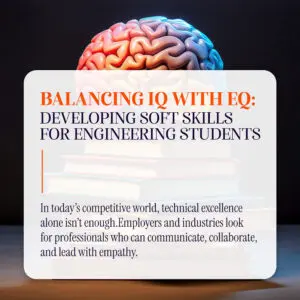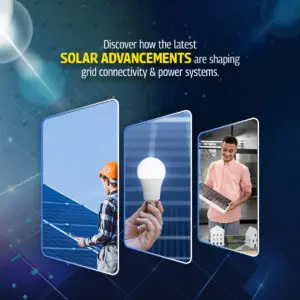
Power transmission systems are at the heart of electrical engineering, powering everything from machines to metropolitans. But industrial machinery, automobiles, power grids, and renewable energy systems need smarter, more efficient, sustainable solutions.
For aspiring electrical engineers, understanding these advancements is key to navigating this ever-changing field.
Design renovations to renewable energy setups, this blog takes you through the latest advancements, real-world challenges and future trends in power transmission.
Let us explore this fascinating landscape of energy conversions.
Emerging Technologies in Power Transmission Systems
The future looks brighter as emerging technologies change the game, making energy distribution more efficient and long-lasting. Whether it is High Voltage Direct Current (HVDC) systems bridging the gap of long-distance power transfer or smart grids using IoT and AI for optimised power flow monitoring, innovations flow smoothly in critical landscapes.
Superconductors with cryogenic cooling redefine the way we transmit power, as they operate on a zero-resistance index, ensuring unhindered, continuous electricity flow. Carbon nanotubes with low density and high strength-to-weight ratio reduce material and installation costs and the eco-footprint of power lines, giving them a competitive edge over conventional conductors.
Sustainability and Energy Efficiency in Transmission Systems
In today’s fast-paced world, productivity demands are skyrocketing as traditional power transmission systems lose approximately 10% of generated energy during transmission. Developers are experimenting with hybrid systems with AI-driven load management to integrate renewable energy seamlessly, meeting energy demands while lowering negative impact.
Techniques like dynamic line rating and real-time monitoring are implemented to optimise transmission and reduce waste. Real-time weather data and sensors can help adjust line capacity and efficient energy transfer. Batteries and super capacitors are fitted to stabilise the grid, reduce energy waste and provide backup during outages.
Challenges in Modern Transmissions – From Design to Maintenance
Modern transmission systems are the backbone of our energy infrastructure, but they come with their challenges. Complex designs that aim to improve efficiency often charge hefty amounts for the installation and take a longer development period. Even the materials used can be prone to issues like overheating and wear or tear of the insulation.
Once these systems are up and running, maintenance becomes another hurdle. Identifying faults in intricate networks or replacing hi-tech components can be time-consuming and expensive. Moreover, adapting to sudden load changes or incorporating renewable energy sources without disruptions adds to the complexity of the scenario.
It is a tricky balancing act, but these challenges open scopes for engineers to innovate and push boundaries.
Simulation and AI in Power Transmission Systems
Engineers can test system designs in a virtual environment through simulation, identifying potential issues before they become real-world problems. Meanwhile, AI is stepping in to remodel fault detection, predictive maintenance, and energy load management areas.
AI-powered algorithms can analyse massive amounts of data in real time, making grids smarter and more responsive to demand fluctuations. AI-driven forecasting and planning facilitate the process of smooth integration of renewable energy sources into the grid.
Sources:
- https://www.motiondrivesandcontrols.co.uk/blog/the-evolution-of-power-transmission-components-a-historical-perspective#:~:text=One%20of%20the%20most%20important,for%20faster%20maintenance%20and%20repairs
- https://eepower.com/technical-articles/understanding-advances-in-transmission-and-distribution/#
- https://powerline.net.in/2024/03/20/technology-strides-cutting-edge-solutions-for-the-transmission-segment/




